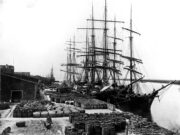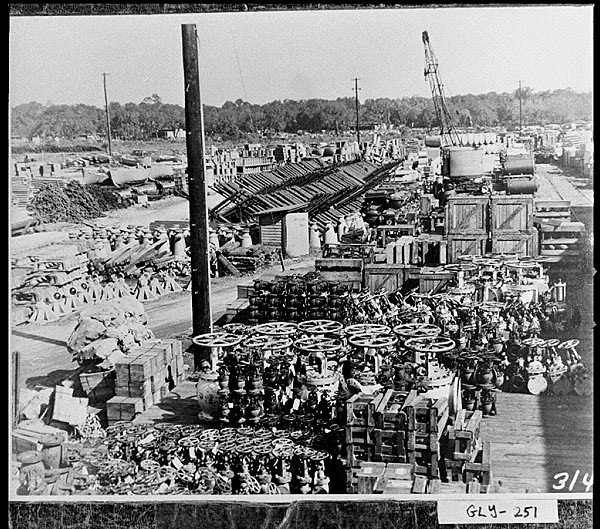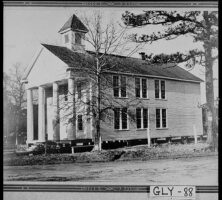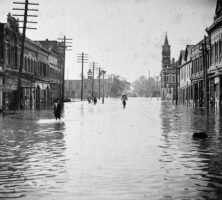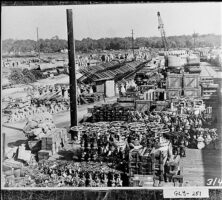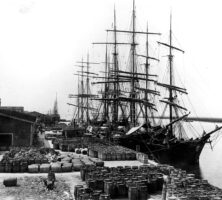Brunswick is the major urban and economic center in the southeast corner of Georgia. Located on the coast, it is approximately seventy-five miles south of Savannah and sixty-five miles north of Jacksonville, Florida.
Brunswick is home to one of Georgia’s two deep-water ports and is the gateway to the Golden Isles, which lie to the east across the Atlantic Intracoastal Waterway: St. Simons Island, Sea Island, Little St. Simons Island, and Jekyll Island. Brunswick, with a population in 2020 of 15,210, remains the only incorporated community in Glynn County. According to the 2020 U.S. census, the population of Glynn County was 84,499.
Early History
In 1771 the Council of the Royal Colony of Georgia laid out a plan for Brunswick similar to that of Savannah, namely, a grid of streets punctuated by a series of parks and squares. The town was named after the duchy of Brunswick (Germany), the ancestral home of King George III and the British House of Hanover. Many streets and squares were given names honoring the king, such as George Street and Hanover Square, while others honored such notable Englishmen as the earl of Egmont, the duke of Gloucester, the duke of Newcastle, and Lord Mansfield. These names were retained after the American Revolution (1775-83), in spite of their English connections. In 1797 Brunswick replaced Frederica, the first settlement on St. Simons Island, as the seat of Glynn County, one of eight original counties created by the Georgia legislature in 1777.
The Port of Brunswick
Brunswick is on a peninsula bounded by the Brunswick River on the south and by the East River and Turtle River on the west. The natural harbor formed by the convergence of these rivers was a prime factor in the colonial council’s decision to place a town there. During the late nineteenth and early twentieth centuries, the Port of Brunswick became a major export site for cotton, naval stores, and lumber, timber, and various other wood products. The Great Depression of the 1930s and the decline of cotton and naval stores production in Georgia virtually killed the port.
During both world wars Brunswick was the site of major shipbuilding efforts. The U.S. Maritime Commission designated it as one of sixteen sites for building cargo ships for World War II (1941-45). The J. A. Jones Construction Company built eighty-five Liberty ships in Brunswick by the end of the war. The navy blimps that patrolled the southern Atlantic coast for U-boats were based at Glynco Naval Air Station. After the war the port began a comeback with the assistance of the newly created Georgia Ports Authority, and by 2000 it had become a major rival to its neighbors, Savannah and Jacksonville.
Today such Georgia forest products as wood pulp, plywood, and paper again constitute a large part of the cargo shipped via the Port of Brunswick. Other exports include agricultural products (oats, barley malt, and corn, for example) and other bulk cargoes, including gypsum, limestone, perlite, salt, sand, and cement. Imported automobiles, including cars made by Hyundai, Mitsubishi, and Volkswagen, and American automobile exports, constitute a large portion of the total cargo.
Other Economic Development
Several major manufacturing or processing companies strengthen the economy of Brunswick. The Georgia-Pacific plant produces wood pulp, the Hercules plant manufactures products extracted from pine stumps, and Rich-SeaPak and King and Prince Seafood process fish and shellfish. Tourism—nourished by the area’s climate, beaches, golf resorts, and history—is the single largest industry in Brunswick and Glynn County.
Since 1975 Brunswick has been home to the Federal Law Enforcement Training Center, located on the site of the former Glynco Naval Air Station, which closed in 1974. The center provides training for personnel in seventy federal agencies, as well as various state, local, and international law-enforcement agencies.
Education and Cultural Life
In 1874 the poet Sidney Lanier came to Brunswick. Inspired by the beauty of the marshlands adjacent to the community, Lanier composed his most notable poem, “The Marshes of Glynn,” which was published in 1878.
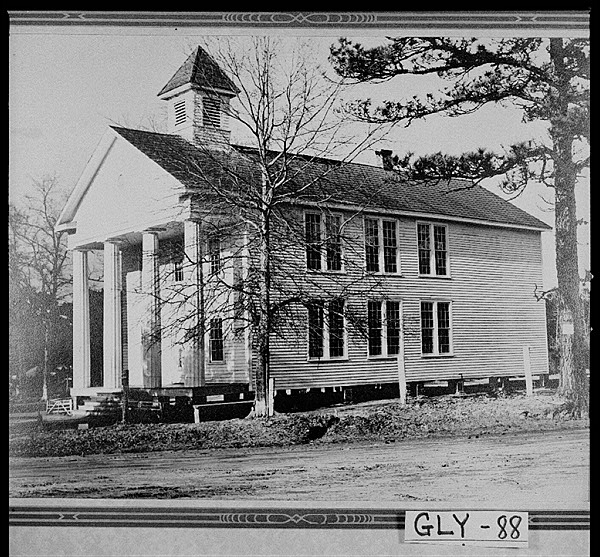
Brunswick is home to Glynn Academy, one of the oldest public schools—and the second-oldest high school—in Georgia, chartered by the state in 1788. The College of Coastal Georgia, formerly Coastal Georgia Community College, was established in 1961 as a unit of the University System of Georgia. A four-year institution, it enrolled approximately 3,000 students in 2008.
Noteworthy residents have included blues musician “Bumble Bee Slim” Easton , writer Mary Hood, boxer Tiger Flowers, Revolutionary War patriot Nancy Hart, and members of the DuBignon family.
In 2020 the racially-motivated murder of Brunswick native Ahmaud Arbery placed the town at the center of a global protest movement. Arbery, a twenty-five-year-old Black man, died at the hands of three white men as he jogged through a suburban neighborhood on February 23, 2020. Suspecting Arbery of burglary, the men pursued Arbery in pickup trucks and shot him after a brief struggle. Video of Arbery’s murder spread on social media in May, with many observers deeming it a modern-day lynching. His name soon became linked to other victims of racial violence through the Black Lives Matter protests in the United States and around the world. As a result of these protests, the General Assembly passed a hate crime bill in 2020 and repealed the state’s citizen’s arrest law. In 2021 state and federal trials held in Brunswick convicted the three white men on charges of murder and hate crimes, sentencing them to life in prison.


